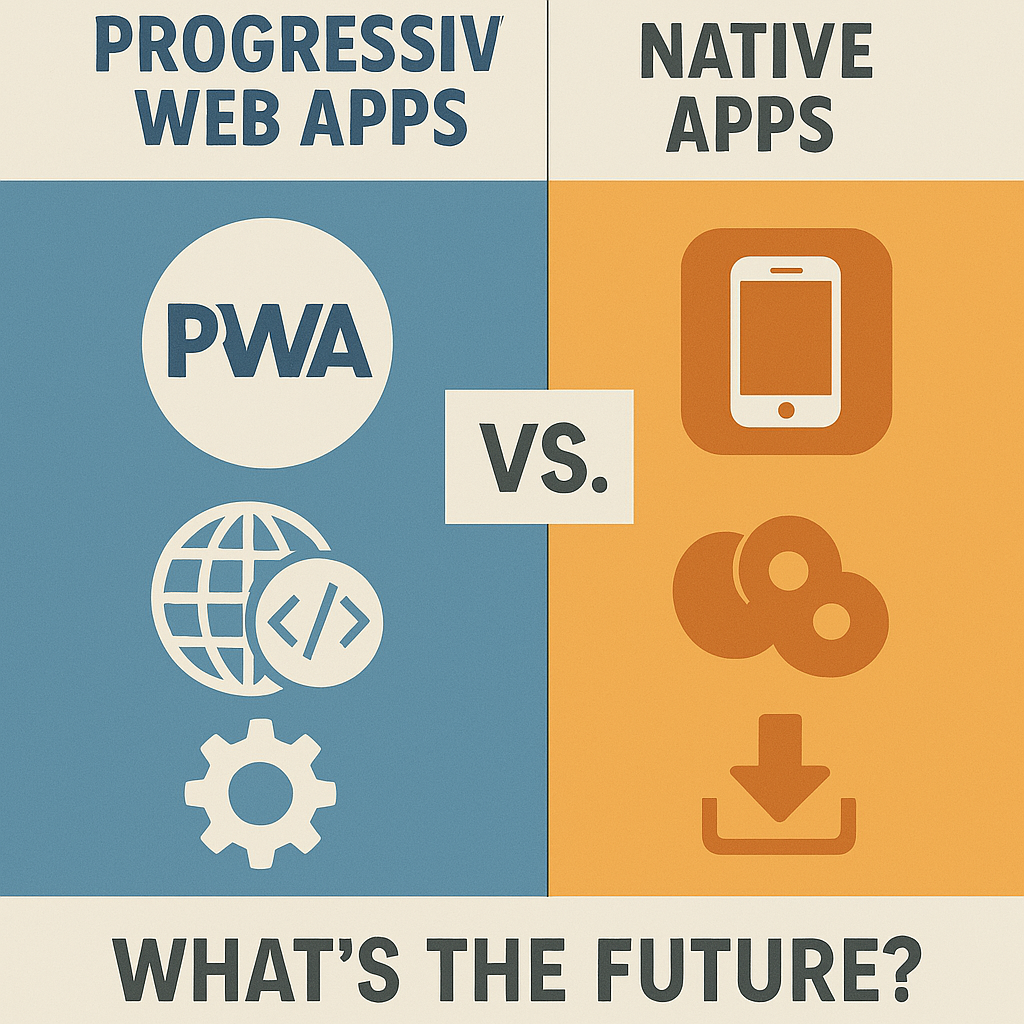Progressive Web Apps (PWAs) vs. Native Apps: What’s the Future?

🔹 Why PWAs Are Gaining Momentum
-
Cross-Platform & Cost-Effective
- PWAs run on any device with a browser, reducing development costs.
- No need for separate iOS/Android versions.
-
No App Store Restrictions
- PWAs don’t require approval from the App Store or Play Store, making deployment easier.
-
Fast & Lightweight
- They load quickly and take up minimal space compared to native apps.
-
Improving Capabilities
- Modern APIs enable PWAs to access features like push notifications, offline support, and even limited background sync.
-
SEO Benefits
- Unlike native apps, PWAs are indexable by search engines, making them more discoverable.
🔸 Why Native Apps Still Dominate
-
Superior Performance & UX
- Native apps can fully utilize device hardware (CPU, GPU, sensors) for smoother experiences.
-
Better Access to Device Features
- PWAs are improving, but native apps still have superior access to Bluetooth, AR, NFC, biometrics, and other hardware.
-
Offline & Background Capabilities
- While PWAs offer some offline functionality, native apps have stronger offline modes and background processing.
-
App Store Visibility & Monetization
- Many businesses rely on app stores for discoverability and monetization via in-app purchases.
🚀 The Future: A Hybrid Approach?
- For general use cases, PWAs will continue to improve and replace some native apps, especially in e-commerce, content platforms, and small business applications.
- For high-performance applications (gaming, AR/VR, video editing, fintech, etc.), native apps will likely remain the best choice.
- Hybrid solutions (like Flutter or React Native) will also grow, offering near-native performance while reducing development effort.
👉 Final Thought: PWAs are the future for many web-driven applications, but native apps will remain essential where performance and deep OS integration are critical.